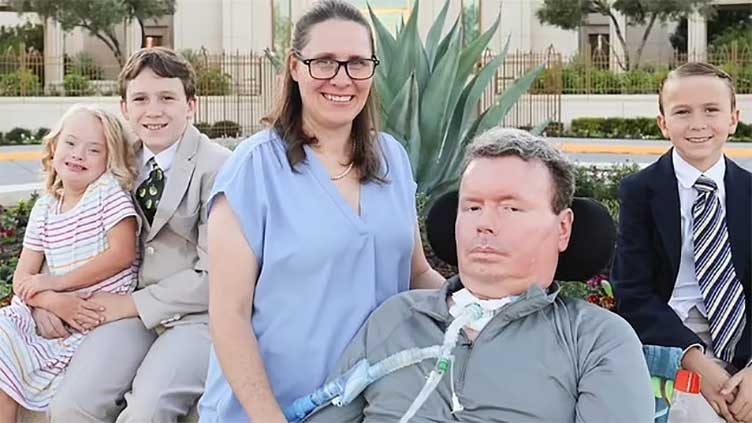Neuralink's third brain implant patient regains speech

Technology
A little chip lets patient control cursor on his MacBook Pro laptop to type
(Web Desk) - An Arizona man has become the third person in the world to receive Neuralink's brain implant – letting him 'speak' again in his own voice.
Brad Smith has ALS, a progressive disease that makes him unable to move any part of his body, except his eyes and the corners of his mouth.
The disease has robbed Mr Smith of his ability to speak, but the implant from Elon Musk's firm Neuralink has hooked up his brain to a computer.
Around the size of five US quarters one on top of the other, the little chip lets the patient control the cursor on his MacBook Pro laptop to type.
Then, Musk's Grok AI creates an accurate vocal clone, trained on vocal recordings of his actual voice before it was lost to the condition, to read the script.
Mr Smith – the first ALS patient and first non-verbal patient to get the implant – has posted a video of his journey to X (Twitter).
'I can control the computer with telepathy – life is good.'
He added: 'Neuralink does not read my deepest thoughts or words I think about.'
ALS – which stands for amyotrophic lateral sclerosis – is a progressive disease that affects nerve cells in the brain and spinal cord.
As the patient explains in his video, ALS causes loss of muscle control and has taken his ability to speak, but it does not affect the mind.
'I have ALS, a really weird disease that kills the motor neurons that control my muscles, but not affecting my mind,' he said.
'My experience has been pretty interesting, starting with a shoulder injury that would not heal and ending up with my current status.
'I cannot move anything but my eyes and I'm totally reliant on a ventilator to keep me alive and breathing.'
Neuralink's chip is placed in a region of the brain that controls the intention to move by a 'sewing-machine-like' robotic surgeon.
The robot removes a small chunk of the skull, connects the thread-like electrodes to certain areas of the brain, stitches up the hole and the only visible remains is a scar left behind from the incision.
'The threads are placed by a robot just a few millimetres into my brain, avoiding the blood vessels so there is almost no bleeding,' Mr Smith added.
It [the implant] connects to the computer via Bluetooth and the computer does a lot of processing.'
The implant captures neuron firings – electrical signals released by the brain's nerve cells – every 15 milliseconds, generating 'a vast amount' of data.
'AI processes this data on a connected MacBook Pro to decode my intended movements in real-time to move the cursor on the screen,' the patient added.
It is the computer's job to decide what is important – finding the relevant signal and 'ignoring the noise'.
Before Neuralink, Mr Smith used an eye gaze control computer for all communication – but it worked best in dark rooms, affecting his ability to venture outside.
'Neuralink lets me go outside and ignore lighting changes,' the patient said.
According to Neuralink, in the future the implant's threads will be implanted deeper in the brain and at varying depths, with ramped-up precision to maximize effectiveness.


